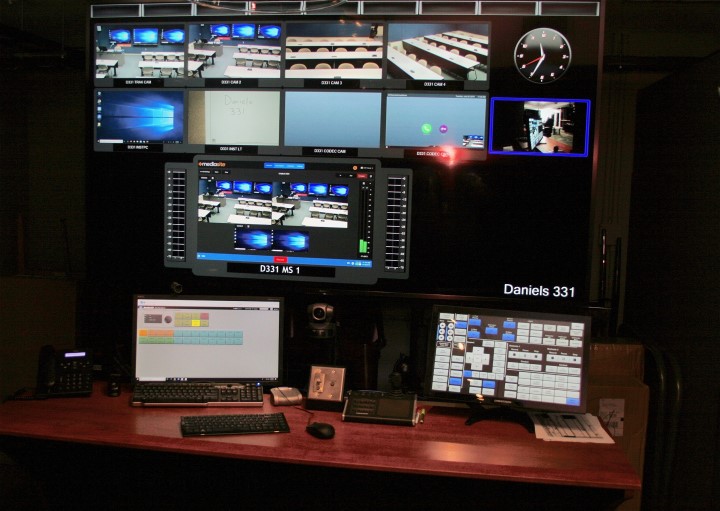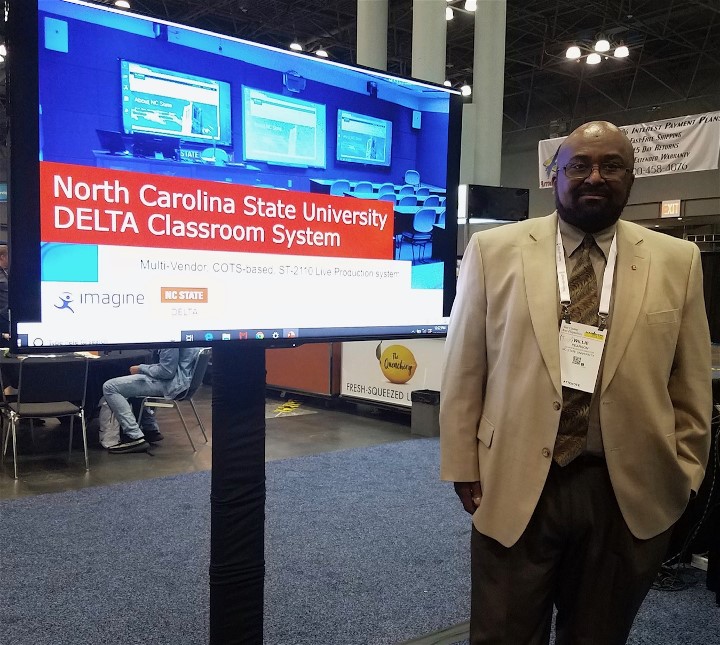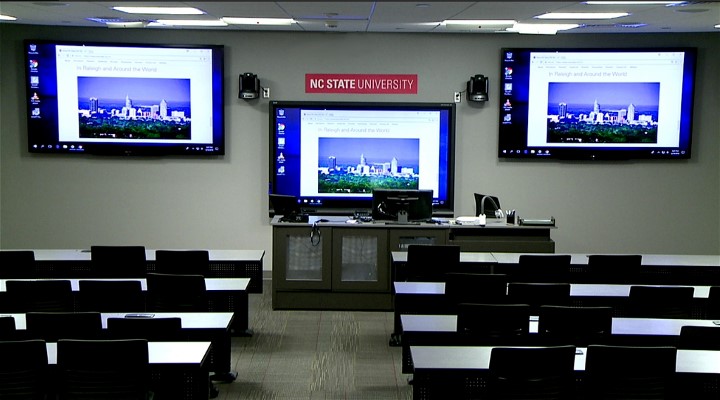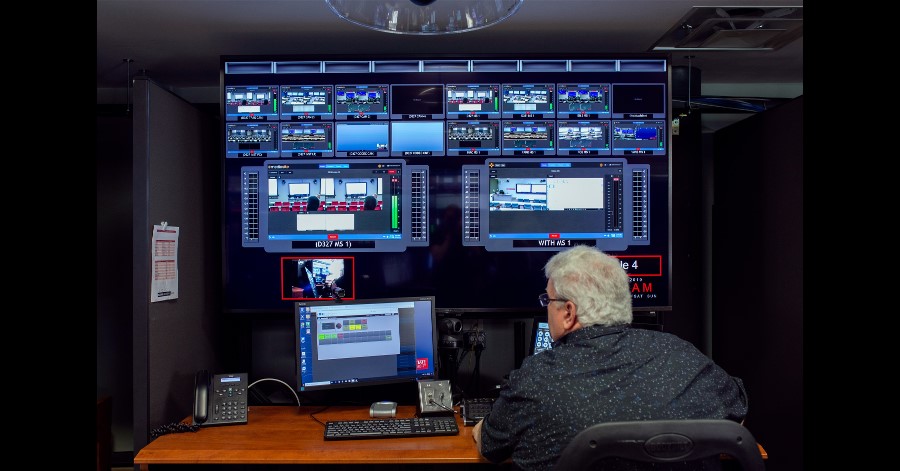Imagine Communications equipment at the core of a standards-based, COTS-hosted solution.
Dallas, 6 May 2020 - North Carolina (NC) State University has transformed its live course production capabilities with a networked video infrastructure, based on the SMPTE ST 2110 standard for connectivity, around its campuses in Raleigh, N.C. Technology from Imagine Communications is at the heart of NC State DELTA (Distance Education and Learning Technology Applications) ― providing a quantum leap in capacity and operational efficiency.
DELTA already had dedicated fiber runs linking their centralized operations center located in Ricks Hall Annex with six other buildings on the main campus and two additional buildings located up to 10.5 kilometers (6.5 miles) away on their Centennial Campus. Fiber links were being used simply as single-mode, point-to-point connections, providing the capacity for just four video signals per classroom transmitted back to the operations center. In addition to replacing systems that were beyond end of life, it was important to DELTA to provide much greater capacity if it was to meet its commitment to the wider university community for high-quality educational media supporting distance learning in an efficient, effective and service-oriented environment. For the year 2018-2019, this included more than 130 live courses and greater than 7,000 hours of classroom recordings, to support almost 50,000 students enrolled in online and distance learning courses.

The new system uses just 16 fibers to provide extensive networked capability, leaving 20 strands from the original installation free for future expansion. By taking a networked IP approach, the new system gave the DELTA team the capability of 32 x 32 HD signals from each remote building. This is achieved thanks to bidirectional 100 gigabit ethernet capacity across the fiber network.
Users can control and manage the entire network from a single point of contact, using Imagine Communications’ Magellan™ SDN Orchestrator, a field-proven software control layer. Each production area can design its own monitor wall, using Imagine’s EPIC™ MV multiviewers under the control of a Crestron GUI. EPIC MV is a highly scalable solution for probing IP streams and monitoring mixed signal types on a single canvas, while offering mission-critical system visibility across compressed and uncompressed IP workflows, and is an integral part of the monitoring solution at NC State. The Cisco Nexus 9336 router supports up to 7 terabytes a second to ensure there are no data bottlenecks.
Critical to the success of the system at NC State is the Imagine Selenio™ Network Processor (SNP), providing the gateway functionality between legacy SDI equipment and the IP world, as well as signal processing and networked video synchronization. This is a powerful and flexible FPGA-powered, software-defined device. Each 1RU SNP has 32 channels of HD processing, giving system architects the combination of complete flexibility and remarkable power in a very small footprint. The SNPs at NC State connect to the Cisco Nexus infrastructure via 10-kilometer transceivers capable of simultaneous 100 Gigabit by 100 Gigabit traffic within just two single-mode fiber strands.

“The Imagine ST-2110 IP network incorporating Magellan SDNO and Selenio Network Processors gives us a bi-directional distributed system that makes the whole campus one giant router,” said Tony Pearson, senior associate director, Video Communication Services from the DELTA team at NC State. “We use PTP timing and AES67 audio, so we can put together the video and the audio resources any class needs and instantly reconfigure for the next one.
“It moves us from a highly constrained system to complete flexibility today, and even more important, it secures our installation for the future,” Pearson added. “Thanks to the SMPTE ST 2110 standard, we can simply connect other devices ― like replay servers or cameras ― as we need to replace them, making the network even more powerful.”
Cassidy Phillips, VP Networking Solutions at Imagine Communications, added, “World events mean we are seeing a huge increase in demand for distance learning. DELTA is showing that, with the right infrastructure, production systems can deliver enormous capacity and productivity. This project also shows the power of standards-based solutions: it is because of the SMPTE ST 2110 standard that software from multiple vendors, running on COTS hardware, can integrate so tightly, providing the right broadcast look and feel while making maximum use of the underlying IT hardware.”
Phillips continues, “With this approach we are helping to transform NC State’s facility from SDI to an all-IP architecture, while delivering cost-effective support for legacy and next-gen workflows.”

Following an intensive four-year process of research, site visits, product evaluations, and real-time pilots in their work environment, DELTA decided in January 2019 that the SMPTE ST 2110 was the best route for their future workflow. The solution from Imagine Communications was chosen, and by April of that year, designs were finalized and approved.
DELTA’s in-house teams worked collaboratively with local integrator ClarkPowell and the Imagine team, to quickly complete the implementation in time to support the first classes of the academic year in August 2019.
Info: www.imaginecommunications.com & AmyDV*
* Distributor for Hellas
Notes: Press Release - Imagine Communications - Dallas, 6 May 2020










